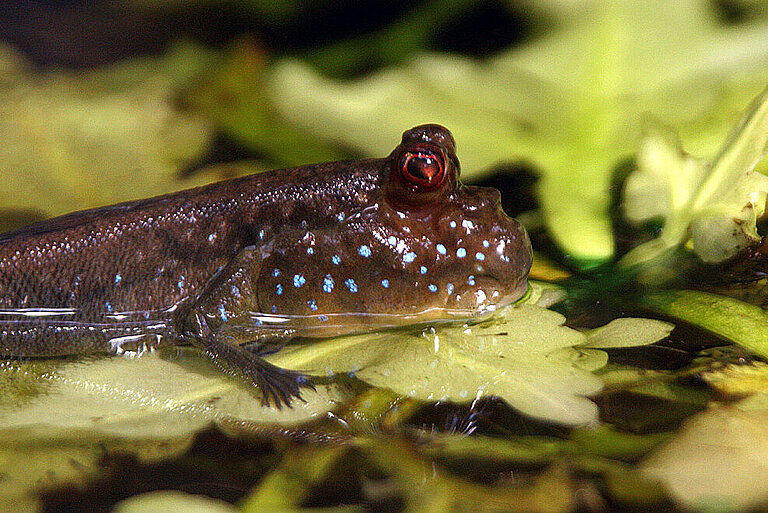Did you know?
The change of high and low tide means that the water level constantly fluctuates along coastlines. In the tropics such tidal zones are often covered with mangrove trees. The seawater there has changing salt concentrations due to freshwater inflow from the land and frequent rainfall. Mangroves have adapted well to these conditions and are sometimes even completely flooded during high water.
This humid habitat is home to mudskippers that inhabit those areas between land and water. These up to 16 cm long fish are amphibious, meaning that they live on land and in the water. However, they prefer to be on the land, moving to higher ground when the tide comes in. Out of the water they hunt insects, worms and small crustaceans. A thick layer of mucus on their scales protects them from drying out. They are also able to „store“ water using their gill chambers and use the oxygen dissolved from this water to breathe on land. With their pectoral fins they are able to literally "skip" on the mud. The lower eyelids are designed to clean their eyes.
Characteristics
| Classification | Order: Gobiiformes; family: Oxudercidae |
|---|---|
| Diet | Small crustaceans, molluscs, worms, insects/insect larvae, plant parts |
| Habitat | Mudflats of brackish waters – lagoons, estuaries and mangrove swamps |
| Reproduction | Courtship routines, spawning and rearing takes place in self-made burrows |
Status according to Red List
More information you will get on the web page of the IUCN Red List.





